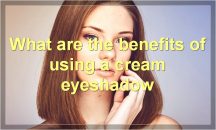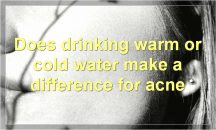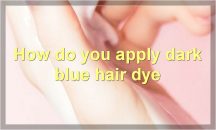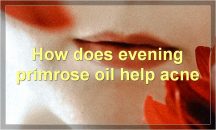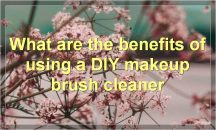Acne is a pesky skin condition that can be caused by a variety of factors, including bacteria, hormones, and even diet. But did you know that there’s another type of acne that can be caused by fungi? Here’s everything you need to know about fungal acne, from its causes to its treatments.
What is the best way to treat fungal acne
Fungal acne is a skin condition that is caused by an overgrowth of yeast on the skin. The most common symptom of fungal acne is pimples or blackheads that appear on the face, chest, back, or other areas of the body. Fungal acne is often mistaken for regular acne, but it is important to know the difference so that you can treat it effectively.
There are many over-the-counter treatments for fungal acne, but they are not all created equal. The best way to treat fungal acne is with a topical antifungal medication that contains ketoconazole or clotrimazole. These medications should be applied to the affected area twice daily for two weeks. If you do not see any improvement after two weeks, you may need to use a stronger formulation of antifungal medication prescribed by your dermatologist.
In addition to using medication, you can also take steps to prevent fungal acne from occurring in the first place. Be sure to wash your face twice daily with a gentle cleanser and use an oil-free moisturizer to keep your skin hydrated. Avoid using harsh scrubs or exfoliants that can irritate the skin and make fungal acne worse. Wearing loose-fitting clothing made of natural fibers like cotton can also help to reduce your risk of developing fungal acne.
What are some common symptoms of fungal acne
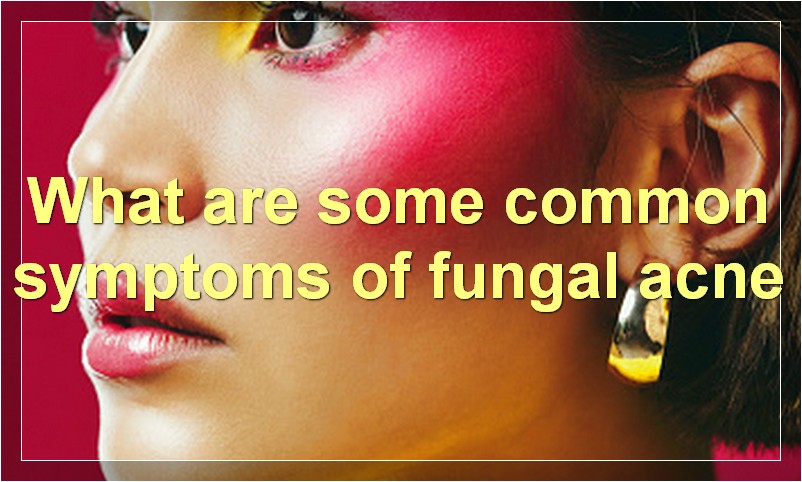
Acne is a skin condition that affects millions of people around the world. While there are many different types of acne, one of the less well-known types is fungal acne. Fungal acne is caused by a type of fungus called malassezia, which is a normal part of the skin flora. However, in some people, this fungus can overgrow and cause problems.
Fungal acne looks very similar to regular acne, with small red bumps or pustules. However, there are some key differences. First, fungal acne is often found on the face, chest, back, and upper arms, while regular acne is more likely to occur on the face. Second, fungal acne is often accompanied by dryness, scaling, and itching, while regular acne is not. Finally, fungal acne is more likely to recur after it has been treated.
If you think you might have fungal acne, it’s important to see a dermatologist for treatment. Treatment typically involves antifungal medications, either taken orally or applied to the skin. In most cases, fungal acne can be successfully treated with no long-term effects.
What are some over-the-counter treatments for fungal acne
Fungal acne is a type of skin infection that is caused by a fungus. The most common type of fungus that causes this condition is called Malassezia. This fungus is found on the skin of humans and animals. It is a normal part of the skin flora, but it can overgrow and cause problems in some people.
Fungal acne looks like small, red, raised bumps on the skin. They are often itchy and can be painful. The bumps are usually found on the face, chest, back, or shoulders. They can also occur on other parts of the body, such as the legs or arms.
Fungal acne is not caused by dirt or poor hygiene. In fact, people with this condition often have very good hygiene habits. The overgrowth of fungus on the skin is thought to be due to an imbalance in the skin’s natural oils. This can be caused by hormones, stress, certain medications, or even changes in climate.
There are several over-the-counter treatments that can help treat fungal acne. These include antifungal creams, gels, or lotions. These products are applied to the affected area of skin and left for a specific amount of time before being washed off.
Some examples of antifungal creams, gels, and lotions that can be used to treat fungal acne include clotrimazole (Lotrimin), ketoconazole (Nizoral), and miconazole (Monistat). These products are available without a prescription at most pharmacies.
It’s important to follow the directions on the package when using these products. Most antifungal creams, gels, and lotions need to be used for at least 2 weeks to see results. Some people may see improvement after just a few days of treatment while others may need to use the product for several weeks.
If over-the-counter treatments don’t work, your doctor may prescribe a stronger antifungal medication. These medications are usually taken by mouth in the form of pills or capsules. Examples of oral antifungal medications that are used to treat fungal acne include fluconazole (Diflucan) and itraconazole (Sporanox).
Fungal acne is a relatively uncommon condition but it can be a bothersome problem for those who have it. Luckily, there are several effective treatments available both over-the-counter and by prescription from your doctor. With patience and regular treatment, you can clear up your fungal acne and get your skin back to looking its best.
How can you prevent fungal acne from developing
Fungal acne is a condition caused by an overgrowth of fungus on the skin. This can lead to red, itchy, and inflamed skin. While there is no cure for fungal acne, there are ways to prevent it from developing.
One way to prevent fungal acne is to keep your skin clean and free of oils. Wash your face twice a day with a mild soap and water. Avoid using heavy creams or oils on your skin.
Another way to prevent fungal acne is to avoid humid environments. Fungus thrives in warm, moist environments. If you live in a humid climate, consider using a dehumidifier in your home. When you are outside, avoid sweating by wearing loose, breathable clothing.
If you have fungal acne, it is important to treat it early. Over-the-counter antifungal creams can help clear up the infection. If the infection does not respond to treatment, see your doctor for prescription medication.
What are some home remedies for fungal acne
Fungal acne can be a pain to deal with. But don’t worry, there are some home remedies that can help clear it up!
First, try using a dandruff shampoo. The active ingredient in dandruff shampoo, selenium sulfide, can kill the fungus that’s causing your fungal acne. Just make sure to use a shampoo that’s meant for your hair type – if you have oily hair, use an oil-free dandruff shampoo.
If dandruff shampoo doesn’t work, you can also try using an antifungal cream. Apply the cream to the affected areas of your skin and let it sit for 10-15 minutes before washing it off.
You can also try making a DIY anti-fungal face mask. Mix 1 tablespoon of honey with 1 teaspoon of lemon juice and apply it to your face. Leave it on for 10-15 minutes and then wash it off with warm water.
Finally, make sure to keep your skin clean and dry. Fungal acne thrives in moist environments, so keeping your skin clean and dry is key to preventing it from coming back.
Is fungal acne contagious

Fungal acne is not contagious. However, the fungus that causes it, called pityrosporum ovale, can be spread from person to person. The best way to prevent the spread of fungal acne is to keep your skin clean and dry. Wash your face twice a day with a mild soap and water. Avoid sharing towels, makeup, or other personal items with someone who has fungal acne. If you think you have fungal acne, see your doctor for treatment.
What are some risk factors for developing fungal acne
Fungal acne is a condition characterized by the presence of small bumps on the skin. These bumps are similar to those seen in acne vulgaris, but are caused by a different type of fungus.
There are several risk factors for developing fungal acne. One of the most important is humidity. This is because the fungus that causes the condition thrives in moist environments. People who live in tropical or subtropical climates are therefore more prone to developing the condition.
Another risk factor is having a weakened immune system. This can be due to conditions such as HIV/AIDS or cancer, or it can be the result of taking certain medications such as corticosteroids or immunosuppressants.
Finally, people with oily skin are also at increased risk of developing fungal acne. This is because the fungus that causes the condition feeds on sebum, which is produced in greater quantities in people with oily skin.
If you think you might have fungal acne, it is important to see a doctor or dermatologist so that they can confirm the diagnosis and prescribe the appropriate treatment.
Can fungal acne be cured
Fungal acne is a type of skin infection that is caused by a fungus. The most common type of fungus that causes this condition is called Malassezia. This fungus is found on the skin of humans and animals. It does not cause any harm to the skin, but it can cause an overgrowth of yeast cells. This overgrowth can lead to the formation of pimples, pustules, and whiteheads.
Fungal acne is most commonly found on the face, back, chest, and shoulders. It is characterized by the presence of small, red bumps that are often itchy. The bumps may also be filled with pus. In some cases, the bumps may turn into blisters. Fungal acne is not contagious and cannot be passed from one person to another.
There are several factors that can contribute to the development of fungal acne. These include humid weather, sweating, tight clothing, and using oily cosmetics. Fungal acne is more common in teenagers and young adults. It is also more common in people who have oily skin.
Fungal acne can be treated with antifungal creams or lotions. These medications are applied to the affected area and are typically used for two to four weeks. In some cases, oral antifungal medication may be necessary. If you have fungal acne, it is important to keep your skin clean and dry. Avoiding tight clothing and sweaty situations can also help prevent the condition from worsening.
What is the prognosis for people with fungal acne
Fungal acne is a condition that results in the overgrowth of yeast on the skin. This overgrowth can lead to the formation of pimples and other blemishes. The good news is that, while it may be unsightly, fungal acne is not harmful and is treatable.
There are many different treatments for fungal acne, including creams, lotions, and oral medications. The most important thing is to keep the affected area clean and dry. This will help to prevent the spread of the fungus and will also help to soothe the skin.
If you have fungal acne, it is important to see a dermatologist so that they can prescribe the appropriate treatment. In most cases, fungal acne can be cleared up with treatment within a few weeks. However, if the condition persists, it may require more aggressive treatment.
What research is being done on fungal acne treatment
Acne is a skin condition that affects millions of people worldwide. While there are many different types of acne, one of the most difficult to treat is fungal acne. Fungal acne is caused by a type of fungus called Malassezia, which is a normal inhabitant of the skin. However, in some people, this fungus can overgrow and cause skin irritation.
There are many different treatments for fungal acne, but finding the right one can be a challenge. Some treatments are more effective than others, and some have more side effects. The goal of treatment is to reduce the amount of fungus on the skin and to improve the appearance of the skin.
There are several research studies underway that are investigating new ways to treat fungal acne. One study is looking at the use of probiotics to treat fungal acne. Probiotics are live bacteria that are found in yogurt and other fermented foods. They have been shown to have many health benefits, including improving gut health and reducing inflammation. The theory is that by applying probiotics to the skin, they will help to reduce the amount of fungus on the skin.
Another study is looking at the use of antifungal drugs to treat fungal acne. These drugs are typically used to treat other types of fungi, such as athlete’s foot or yeast infections. However, they may also be effective against fungal acne. Antifungal drugs work by killing the fungi that cause the infection. However, they can also kill beneficial bacteria on the skin, so they must be used carefully.
Still another study is investigating the use of light therapy to treat fungal acne. Light therapy uses light waves to kill bacteria and fungi. It is often used to treat other types of skin conditions, such as acne vulgaris (the most common type of acne). The theory is that by exposing the skin to certain types of light, it will kill the fungi that cause fungal acne.
These are just a few of the studies that are currently underway to find new ways to treat fungal acne. With more research, better treatments will be developed to help people manage this condition.
